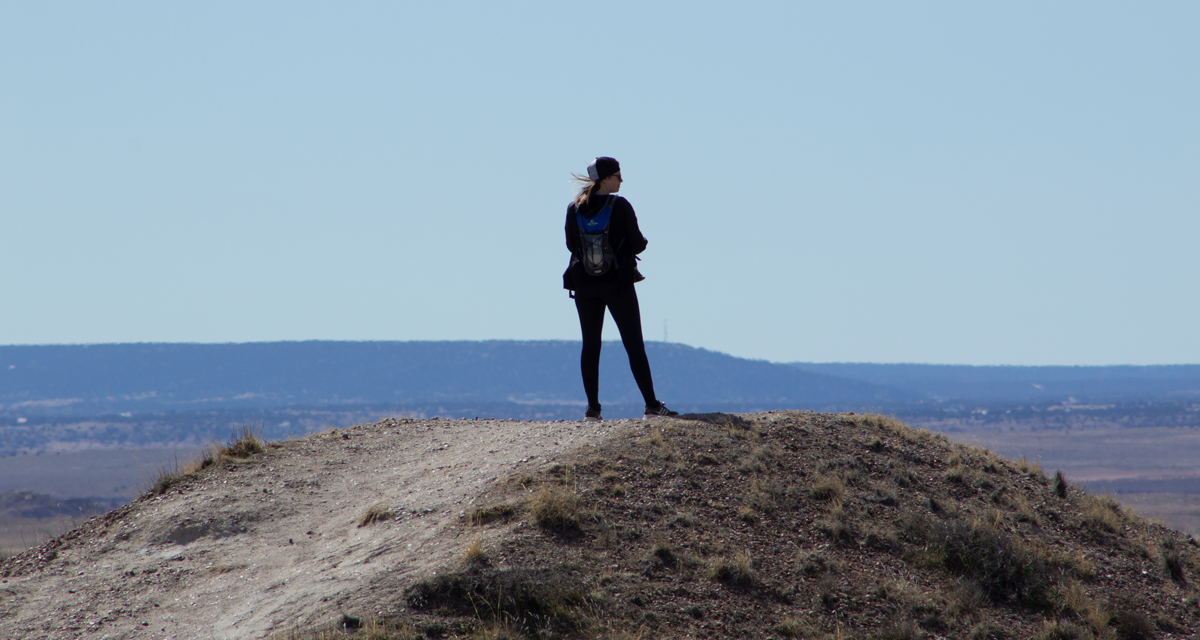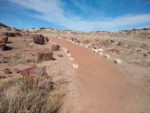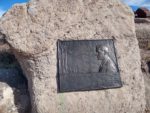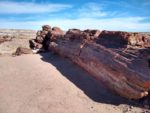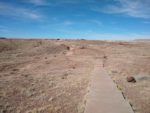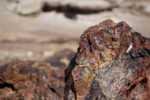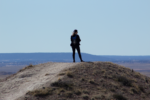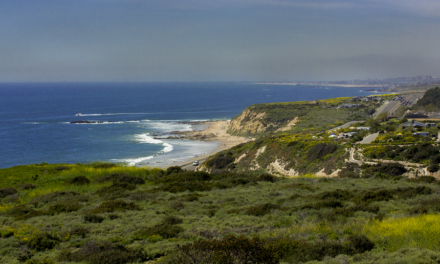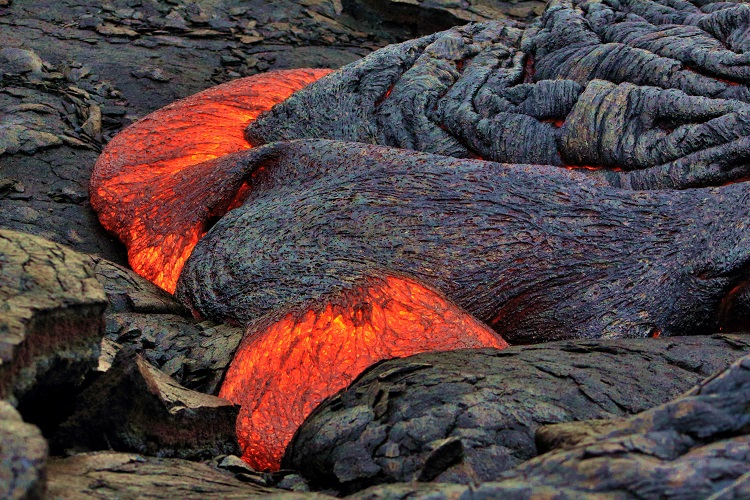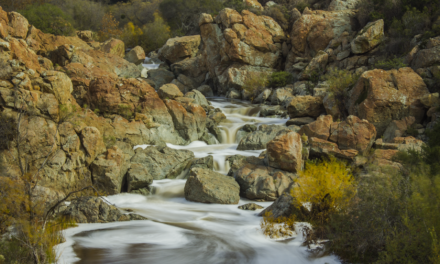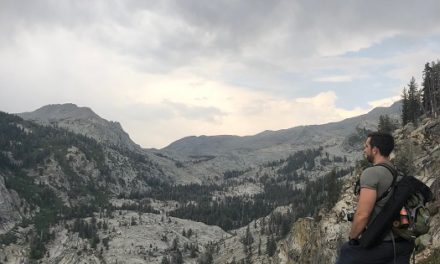Giant Logs Loop Trail Hiking Trail Guide
The Four Corners region of the United States features some of the most unique landscape in the country. Known as the Colorado Plateau, this region includes several popular national parks. The southeastern edge of the plateau in northern Arizona is home to Petrified Forest National Park. This national park is known for its reptilian and tree fossils as well as a large area of vibrantly colored landscape known as the painted desert.
Located at the southern entrance of Petrified Forest National Park, the Giant Logs loop trail is a short hike near the Rainbow Forest museum. This trail is a self-guided interpretive hike. There is a pamphlet at the beginning of the trail with several markers along the way. Each marker is dedicated to some basic historical facts about the region and national park. This trail is primarily known for its abundance of large petrified wood. Other views will include the base of gray and purple rolling badlands, the plains of the high desert south of the park boundaries.
It is important to note that prior to European exploration and arrival, this region was highly valued by Native Americans for over ten thousand years. The area within Petrified National Forest served as an important trade and migration route for the people’s of the Pueblo, Zuni, and Hopi. Surrounding the park’s borders is the territory of Navajo Nation.
Giant Logs Loop Trail History
Prior to being the high desert plains and Painted Desert of northern Arizona that it is today, the area was once an immense floodplain. The tropical environment was home to many pre-historic species of amphibians and reptiles during the Triassic period approximately 225 million years ago. The current long logs are a remnant of a large scale flood 200 million years ago.
In the flood, prehistoric trees were buried by immense layers of sediment. The logs were buried so deep that oxygen was cut off from the decaying process. Sediment and volcanic ash in the water allowed organic matter to slowly be replaced with a variety of minerals. Today the fossilized trees are mostly made up of quartz and are a reminder of an environment that once was.
On A Personal Note
Although this trail is by no means long, it does feature a significant amount of petrified wood. The hike is a great addition to the Rainbow Museum where one can learn additional information about the park. If you’re looking for additional things to do near this trail, I highly recommend the Long Logs and Agate House Loop Trail.
As a reminder, it is a criminal act to steal any petrified wood, fossils, or Native American artifacts. Please remember to always leave no trace when visiting the outdoors.
Have you hiked this trail recently? Please share any trail updates/pictures in the comments below.
- Overall Difficulty: 5%
- Overall Views: 25%
Giant Logs Loop Trail Quick Facts:
- Elevation: 5,433 feet.
- Elevation Gain: 80 feet.
- Estimated Distance: 0.4 miles.
- My Actual Distance: 0.5 miles.
- Estimated Time: 20-60 minutes.
- My Time: 17 minutes moving; 23 minutes total.
Giant Logs Loop Trail Directions:
Giant Logs Loop Trail Pictures:
- Leading out of the Rainbow Forest Museum.
- Some of the interpretive trail markers along the way.
- Giant logs along the way.
- There are some steps along this trail.
- A close up of some of the petrified wood.
- Looking out along some of the rolling hills along the way.
Who Giant Logs Loop Trail Is For
Advanced Hikers: Although this trail is not long by any means, it’s a great way to get your legs moving if you have just one day to spare in the park. The large concentration of petrified wood was a unique view in itself.
Expert Hikers: This is not a tough trail by any means but let that keep you from enjoying the historical perspective of the trail.
It’s always a good idea to be aware of what type of hiking level you’re at.
Best Time Of Year To Hike Giant Logs Loop Trail:
As summer nears the temperatures also increase. Between the months of July to September it’s not uncommon for there to be temperatures upwards of 100 degrees. Summer is also the rainy season. The monsoon season kicks into gear starting in late June and tapers off in September. It’s not uncommon for there to be heavy downpours, lightning, and periodic flooding. Most of the park’s rainfall takes place between the months of July to September.
If you hear thunder, it’s not a good idea to be out along the open trail. Instead, seek shelter so that you won’t be the tallest object standing in an open field during a lightning storm.
It’s always a great idea to check the weather before a hike.
Giant Logs Loop Trail Conditions:
There are pamphlets at the beginning of the trail for the self-guided interpretive tour. To help with avoiding waste, please put back the guides so that others can use them. Please be aware that rattlesnakes are common in this area. There is no poison ivy along the trail.

